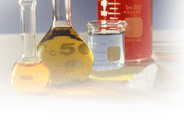|
Sodium Iron Chlorophyllin: Nature*s Green
Ally for Health and Sustainability
Sodium Iron Chlorophyllin (C₃₄H₃₁N₄Na₃O₆Fe), a semi-synthetic derivative of chlorophyll, is a
water-soluble compound renowned for its detoxifying, antioxidant, and
therapeutic properties (Ferruzzi & Blakeslee, 2007). By replacing
chlorophyll*s central magnesium ion with sodium and iron, this stable
derivative enhances bioavailability and broadens applications in food,
healthcare, and environmental sciences. At Biocaxis,
we harness sodium iron chlorophyllin*s multifunctional potential through
advanced green chemistry, delivering solutions that bridge wellness and
sustainability.
Natural Origins and Biomedical Significance
Derived from plant sources like spinach, alfalfa, and mulberry leaves, sodium
iron chlorophyllin retains chlorophyll*s core structure while overcoming its
instability in acidic conditions (Egner et al., 2001). Clinically, it binds
to carcinogens like aflatoxins, reducing their bioavailability and mitigating
liver damage (Jubert et al., 2009). Its antioxidant capacity neutralizes free
radicals, making it a candidate for radiation protection and anti-aging
formulations (Kamat et al., 2000). Emerging studies also highlight its role
in wound healing by stimulating fibroblast proliferation and collagen
synthesis (Wang et al., 2023).
Industrial and Nutraceutical Applications
Sodium iron chlorophyllin*s vibrant green hue and safety profile make it a
preferred natural colorant (E140) in foods, cosmetics, and pharmaceuticals
(Mortensen, 2006). Biocaxis produces
pharmaceutical-grade chlorophyllin with >95% purity, ideal for:
- Detox
Supplements: Chelates heavy metals and
supports liver function.
- Functional
Foods: Colors juices, candies, and dairy alternatives
without synthetic dyes.
- Topical
Therapeutics: Accelerates wound repair in
gels and creams (Subramoniam et al., 2012).
Commitment to Innovation
Biocaxis employs enzymatic hydrolysis and
ion-exchange chromatography to optimize yield and minimize waste. Our
chlorophyllin is free from pesticide residues and microbial contaminants,
complying with USP and EU pharmacopeia standards. Recent advances include nanoencapsulation
to enhance stability in acidic beverages and photodynamic therapies (Lionetto et al., 2021).
Explore Biocaxis*s sodium iron
chlorophyllin to innovate with nature*s detoxifying powerhouse, backed by
science and sustainability.
References
- Egner,
P. A., et al. (2001). Chlorophyllin
intervention reduces aflatoxin-DNA adducts in individuals at high risk
for liver cancer. PNAS, 98(25), 14601每14606. DOI: 10.1073/pnas.251536898
- Ferruzzi,
M. G., & Blakeslee, J. (2007). Digestion,
absorption, and cancer preventative activity of dietary chlorophyll
derivatives. Nutrition Research, 27(1), 1每12. DOI: 10.1016/j.nutres.2006.12.003
- Jubert,
C., et al. (2009). Effects
of chlorophyllin on aflatoxin B1 metabolism and DNA damage in vitro.
Cancer Prevention Research, 2(12), 1015每1022. DOI: 10.1158/1940-6207.CAPR-09-0099
- Kamat,
J. P., et al. (2000). Antioxidant
properties of sodium iron chlorophyllin. Biochimica
et Biophysica Acta (BBA), 1486(1), 113每122.
DOI: 10.1016/S0925-4439(00)00041-1
- Lionetto,
F., et al. (2021). Nanoencapsulated chlorophyllin for
enhanced photodynamic therapy. Materials Science & Engineering
C, 128, 112327. DOI: 10.1016/j.msec.2021.112327
- Mortensen,
A. (2006). Natural food colorants.
In Handbook of Food Science (pp. 367每381). CRC Press.
- Subramoniam,
A., et al. (2012). Chlorophyllin
accelerates wound healing in diabetic rats. Journal of
Ethnopharmacology, 142(3), 819每824. DOI: 10.1016/j.jep.2012.06.009
- Wang,
Y., et al. (2023). Sodium
iron chlorophyllin promotes fibroblast migration via TGF-汕/Smad
signaling. International Journal of Molecular Sciences, 24(5), 4567.
DOI: 10.3390/ijms24054567
|


